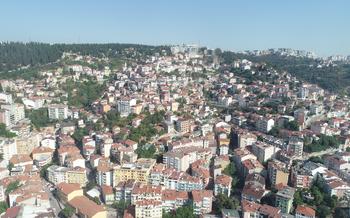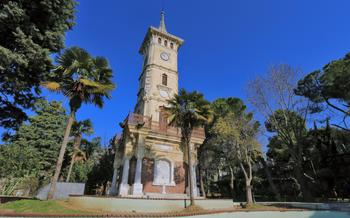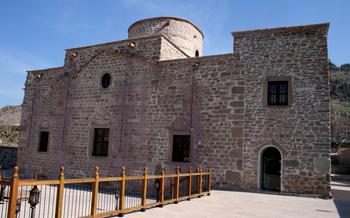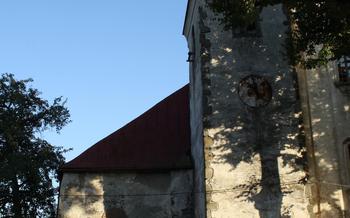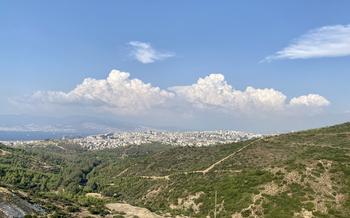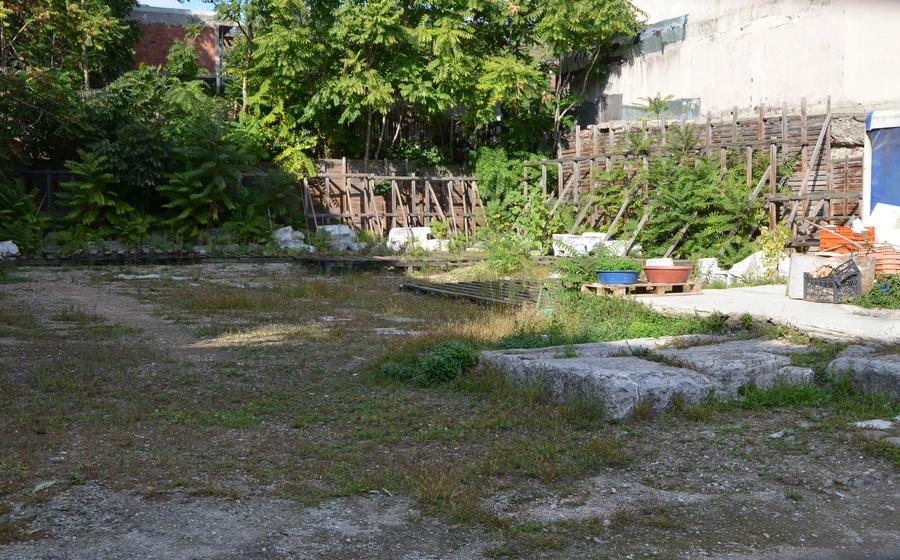
Nicomedia Excavation Site
- The Antiquity of Nicomedia
- Excavation Site Location
- Preservation and Restoration Efforts:
- Major Discoveries at the Site
- Exploring the Ruins
- The Amphitheater: A Stage for Ancient Spectacles
- The Basilica
- The City Walls: Sentinels of a Bygone Era
- The Necropolis: Unveiling the Secrets of Ancient Funerary Customs
- Local Cuisine and Dining
- Nearby Attractions
- Photography Opportunities at the Nicomedia Excavation Site:
The Antiquity of Nicomedia
Nicomedia, known as İzmit today, holds a prominent place in history for its pivotal role as an ancient city. Founded in the 4th century BC by King Nicomedes I, it served as the capital of the Roman province of Bithynia and Pontus, a region encompassing much of northwestern Turkey. Its strategic location on the trade routes between the Black Sea and the Mediterranean made it a thriving commercial hub. During the Byzantine Empire, Nicomedia's importance grew as it became one of the four great cities of the Eastern Roman Empire, rivaling Constantinople itself. The city's rich history, coupled with its well-preserved ruins, make it a fascinating destination for travelers interested in exploring the remnants of ancient civilizations.
Excavation Site Location
The Nicomedia Excavation Site is conveniently situated within the city limits of İzmit, providing easy access for visitors. To reach the site, one can take advantage of the well-connected public transportation system. Several bus lines stop nearby, making it a convenient option for those without private vehicles. Alternatively, visitors can opt for a taxi or ride-sharing service for a more direct route.
For those driving, the site is easily accessible via the main roads of İzmit. Ample parking is available in the vicinity, ensuring a hassle-free visit. To enhance your navigation, you can refer to the provided map or utilize GPS coordinates to pinpoint the exact location of the Nicomedia Excavation Site.
Preservation and Restoration Efforts:
The Nicomedia Excavation Site is a testament to the enduring legacy of the ancient city. Preserving and restoring this valuable heritage is a collaborative effort involving local authorities, archaeologists, and international organizations. The site's significance has garnered support from UNESCO, which has recognized its outstanding universal value. Ongoing restoration projects aim to stabilize and protect the ruins, ensuring their longevity for future generations. Challenges include mitigating the effects of natural elements, managing tourism, and balancing preservation with accessibility. By safeguarding this site, we not only protect a piece of history but also create a space for cultural exploration, education, and inspiration.
Major Discoveries at the Site
During the excavations at the Nicomedia Excavation Site, significant discoveries have been made, shedding light on the city's rich history and culture. Among these discoveries are architectural remains, artifacts, and inscriptions that offer valuable insights into Nicomedia's past.
One of the most notable discoveries is the well-preserved amphitheater, providing a glimpse into the city's entertainment and cultural life. The amphitheater's impressive size and intricate architectural features attest to the importance of public spectacles in ancient Nicomedia.
Another significant find is the basilica, a large and imposing structure that served as a religious and civic center. The basilica's impressive size and elaborate decorations suggest that it was a place of great importance for the city's inhabitants and a testament to the influence of Christianity in Nicomedia.
The excavations have also revealed numerous artifacts, including pottery, coins, jewelry, and sculptures. These artifacts provide valuable information about the daily lives of the city's residents and the cultural influences that shaped Nicomedia's society.
Additionally, inscriptions found at the site have shed light on the city's administration and governance. These inscriptions include decrees, laws, and dedications, providing valuable insights into the political and social structures of ancient Nicomedia.
Overall, the discoveries made at the Nicomedia Excavation Site have significantly contributed to our understanding of the city's history, culture, and daily life. These findings have illuminated the grandeur and significance of ancient Nicomedia, making it a must-visit destination for anyone interested in Roman and Byzantine history.
Exploring the Ruins
Visiting the Nicomedia Excavation Site is like stepping back in time. As you wander through the ancient streets, you can imagine the bustling city that once stood here. The ruins are well-preserved, and they offer a glimpse into the lives of the people who lived here centuries ago.
The site is divided into several sections, each with its own unique features. The most impressive section is the amphitheater, which is one of the best-preserved Roman amphitheaters in the world. It could hold up to 25,000 spectators and was used for gladiatorial contests, chariot races, and other public events.
Another must-see attraction is the basilica, which was once a large and elaborate church. The basilica is now in ruins, but its size and grandeur are still evident. It is believed to have been built in the 4th century AD, and it was one of the largest churches in the Byzantine Empire.
The city walls are another impressive sight. They were built in the 3rd century AD, and they once surrounded the entire city. The walls are still standing in some places, and they offer a great view of the city and the surrounding area.
The necropolis, or cemetery, is located outside the city walls. It contains hundreds of tombs, ranging from simple graves to elaborate mausoleums. The necropolis is a valuable source of information about the funerary customs of the ancient Nicomedians.
The Nicomedia Excavation Site is a fascinating place to visit. It is a reminder of the rich history of Turkey, and it offers a glimpse into the lives of the people who lived here centuries ago.
The Amphitheater: A Stage for Ancient Spectacles
Among the ruins of Nicomedia, the amphitheater stands as a testament to the city's vibrant past. This well-preserved structure is one of the most significant discoveries at the excavation site, offering a glimpse into the entertainment and spectacles that once captivated the ancient inhabitants.
Built in the 2nd century AD, the amphitheater could accommodate an estimated 10,000 spectators. Its elliptical shape and tiered seating provided an optimal view of the events taking place in the central arena. Gladiatorial contests, chariot races, and theatrical performances were among the popular entertainments held here.
One of the most fascinating aspects of the Nicomedia amphitheater is its intricate architectural design. The exterior facade features arched entrances and decorative pilasters, while the interior boasts a complex system of vaults and tunnels that facilitated the movement of performers and animals.
Legends and stories surround the amphitheater, adding to its allure. It is said that the arena was once the site of fierce gladiator battles, where brave warriors fought for their freedom or glory. The echoes of these ancient contests seem to linger in the air, transporting visitors back in time.
Today, the amphitheater stands as a symbol of Nicomedia's rich cultural heritage. Visitors can wander through its ancient passageways, imagining the roar of the crowd and the excitement of the spectacles that once unfolded within these walls.
The Basilica
The basilica, a prominent structure within the Nicomedia Excavation Site, served as a religious and civic center for the ancient city. Its architectural grandeur reflects the significance it held in the urban landscape. The basilica's impressive size and intricate design showcase the skill and artistry of its builders. Its layout features a central nave flanked by aisles, creating a spacious and awe-inspiring interior. Decorative elements such as intricate mosaics, marble columns, and carved capitals adorn the basilica, adding to its visual splendor.
The basilica played a crucial role in the religious life of Nicomedia. It served as a place of worship for early Christians, hosting grand ceremonies, and important gatherings. Its historical significance extends beyond its religious function, as it was also used for civic purposes. The basilica served as a venue for official meetings, public announcements, and judicial proceedings, demonstrating its multifaceted role in the ancient city's governance.
Archaeological excavations at the basilica have yielded valuable insights into the history of Nicomedia and its Christian heritage. Discoveries include well-preserved mosaic floors depicting biblical scenes and intricate carvings that shed light on the artistic traditions of the period. These findings provide a tangible connection to the past, allowing visitors to glimpse the religious and civic life that once thrived within the basilica's walls.
The City Walls: Sentinels of a Bygone Era
In the heart of Nicomedia, the ancient city walls stand as enduring testaments to the strategic prowess and defensive might of its former inhabitants. Constructed with meticulous precision, these towering fortifications once encircled the city, forming an impenetrable barrier against invaders. Stretching for several kilometers, the walls showcased the engineering brilliance of the era, featuring multiple layers of defense, fortified gates, and watchtowers that provided a panoramic view of the surrounding landscape.
Despite the ravages of time and the relentless march of history, substantial sections of the city walls remain intact, offering a glimpse into the formidable defensive system that once protected Nicomedia. Visitors can trace the walls' path, marveling at the sheer size and sturdy construction of these ancient bulwarks. Along the way, they may encounter crumbling towers, remnants of bastions, and strategic gateways that once controlled access to the city.
One particularly captivating section of the walls is the eastern gate, which has been partially restored and provides a tangible connection to the past. As visitors pass through this ancient portal, they can imagine the bustling activity and controlled chaos that once characterized the city's main entrance. The gate's sturdy construction and intricate design speak volumes about the importance placed on security and defense in ancient Nicomedia.
Legends abound regarding the city walls, adding a touch of mystery and intrigue to their already captivating presence. One such tale tells of a secret tunnel that was constructed beneath the walls, allowing the city's inhabitants to escape undetected in times of siege. Whether this tunnel truly existed or is merely a product of local folklore remains a subject of debate among historians and archaeologists.
As visitors explore the remnants of Nicomedia's city walls, they are transported back in time, experiencing the grandeur and resilience of an ancient metropolis. These walls stand as silent witnesses to the city's triumphs and tribulations, embodying the indomitable spirit of its people.
The Necropolis: Unveiling the Secrets of Ancient Funerary Customs
The vast expanse of the necropolis, a city of the dead, lies just outside the ancient city walls of Nicomedia, inviting visitors to explore the final resting places of its former inhabitants. Here, intricately carved tombs, some grand and elaborate, others modest and understated, reveal the diverse burial practices and customs of ancient Nicomedians.
Archaeological excavations have unearthed a treasure trove of artifacts from the tombs, shedding light on the beliefs and rituals associated with death and the afterlife. Jewelry, pottery, coins, and personal belongings accompany the deceased, offering glimpses into their lives and social status. Inscriptions on tombstones provide poignant tributes and epitaphs, immortalizing the memories of those who have passed on.
One of the most fascinating aspects of the necropolis is the variety of tomb types. From simple earthen graves to elaborate mausoleums, the tombs reflect the social hierarchy and cultural influences of ancient Nicomedia. Some tombs feature intricate architectural details, such as vaulted ceilings, columns, and decorative niches, while others are adorned with colorful frescoes and mosaics depicting scenes from mythology or everyday life.
Exploring the necropolis is a journey through time, allowing visitors to connect with the lives and beliefs of the ancient Nicomedians. It is a place where the past and present intertwine, where the stories of the dead whisper secrets of a bygone era.
Local Cuisine and Dining
Exploring the culinary delights of İzmit is a must-do for any visitor. The city's cuisine draws inspiration from its rich history and diverse cultures, resulting in a tantalizing blend of flavors and aromas.
Near the Nicomedia Excavation Site, you'll find an array of local restaurants and eateries serving up traditional Turkish fare. For a taste of authentic Turkish cuisine, try the mouthwatering kebabs, freshly caught seafood, or the famous Turkish delight. Don't miss out on the opportunity to savor the region's unique flavors, such as the smoky eggplant salad or the sweet and tangy pomegranate molasses.
For those with dietary restrictions, there are plenty of vegetarian and vegan options available. Look for dishes made with fresh vegetables, legumes, and grains, such as the hearty lentil soup or the flavorful stuffed grape leaves.
To fully immerse yourself in the local culinary experience, consider visiting the bustling market in İzmit, where you can find an array of fresh produce, spices, and traditional Turkish sweets. Engage with the friendly locals, learn about their culinary traditions, and pick up some ingredients to create your own Turkish feast.
Nearby Attractions
Beyond the Nicomedia Excavation Site, İzmit offers a wealth of other attractions to complement your historical exploration. Just a short distance away, visit the lively İzmit Clock Tower, an iconic landmark that stands as a symbol of the city's rich past. For a tranquil escape, head to Yuvacık Dam and immerse yourself in the serene beauty of its natural surroundings.
If you're drawn to history, delve into the fascinating displays at the İzmit Museum, showcasing artifacts and exhibits that narrate the city's captivating story. Nature enthusiasts will find solace in the lush greenery of Orhan Gazi Park, offering a respite from the urban hustle and bustle.
For a unique cultural experience, stroll through the vibrant İzmit Bazaar, where you can haggle for traditional Turkish handicrafts, savor mouthwatering street food, and soak up the lively atmosphere. As the sun sets, embark on a scenic boat tour along the scenic shores of İzmit Bay, marveling at the city's illuminated skyline as you glide across the tranquil waters.
Plan a comprehensive itinerary that allows you to seamlessly blend history, nature, and culture during your visit to İzmit. With its diverse offerings, the city promises an enriching and memorable travel experience for every visitor.
Photography Opportunities at the Nicomedia Excavation Site:
The Nicomedia Excavation Site presents a treasure trove of photographic opportunities for history buffs, architecture enthusiasts, and nature lovers alike. The ancient ruins, set against a backdrop of rolling hills and lush greenery, create a picturesque scene that will surely captivate your lens.
Best Times for Photography:
For the most stunning shots, plan your visit during the golden hours of sunrise or sunset. The warm, diffused light casts a magical glow on the ruins, accentuating their architectural details and creating a sense of awe and wonder.
Must-Capture Spots:
Panoramic Views:
Capture breathtaking panoramic shots from the elevated viewpoints within the site. These vantage points offer sweeping vistas of the ruins, the surrounding landscape, and the distant cityscape.
Close-Ups of Architectural Details:
Zoom in on the intricate carvings, columns, arches, and mosaics that adorn the ancient structures. These details provide a glimpse into the craftsmanship and artistry of Nicomedia's builders.
Nature and Ruins:
Compose shots that juxtapose the ancient ruins with the natural beauty of the surrounding environment. Capture the contrast between the weathered stones and the vibrant greenery, creating a sense of harmony and timelessness.
Share Your Shots:
Share your stunning photographs of the Nicomedia Excavation Site on social media using the hashtag #NicomediaExcavationSite. Inspire fellow travelers and history enthusiasts to explore this hidden gem and appreciate its rich cultural heritage through your lens.



